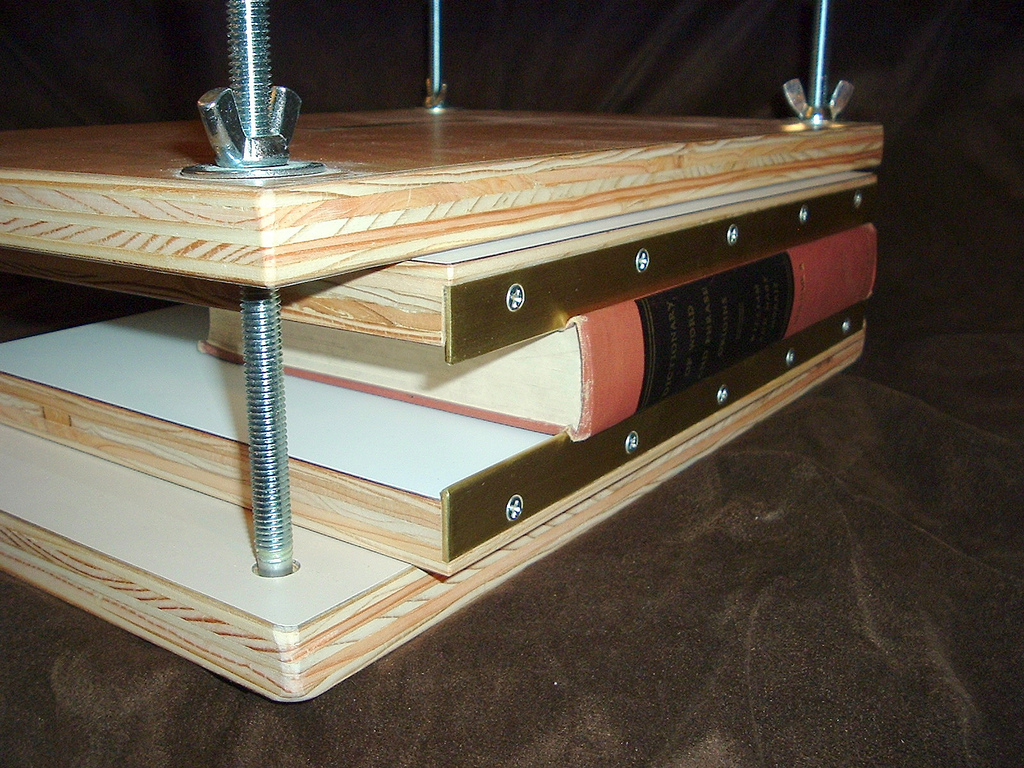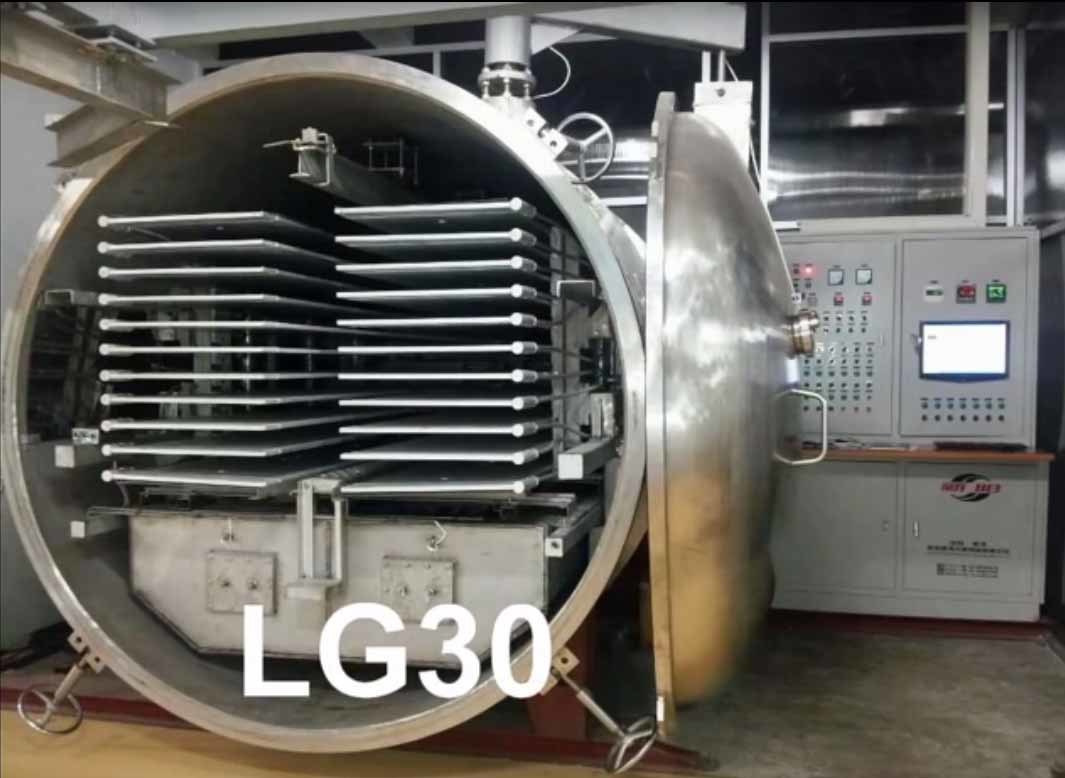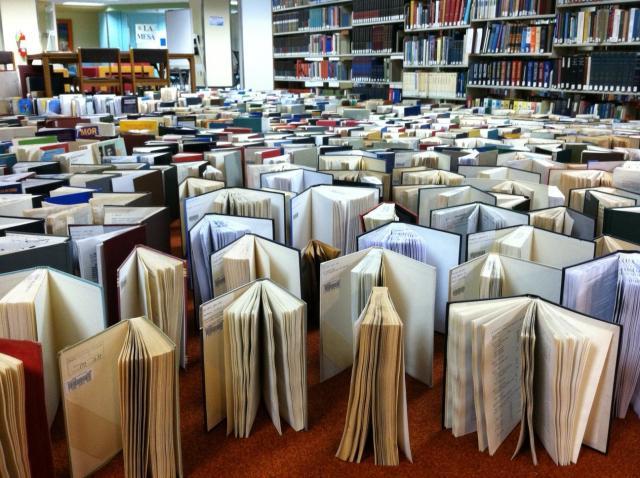Water is anathema to the printed page. Whether it’s a burst pipe, a leaky radiator, or a very humid environment, libraries and archive centers know that moisture can wreak havoc on their collections. But thanks to modern techniques, it’s possible to minimize damage and restore those precious volumes in as short a time as a few days or weeks.
The first step to the successful recovery of water-damaged books and documents is a rapid response to the problem at hand. The sooner an institution decides to take action, the greater the chances of complete restoration of the damaged materials.
Understandably, libraries or archive centers faced with water damage are often also obliged to consider such matters as insurance policies, vendor contracts, or even the value of the damaged collection and the prudence of investing in its recovery. These considerations take time and can turn attention away from the restoration process itself. If in doubt about restoring a damaged collection, institutions are advised to freeze the items in question until a decision can be made. Freezing prevents the growth of mold while giving institutions time to deal with other logistics.
Another key consideration is determining the source of the water damage. Is the water contaminated with debris, such as pipe rust, dirt, flood debris, sewage, or salt? (Mold is a different type of contaminant, and we will consider books affected by mold in another blog post. It’s important not to clean materials contaminated by mold without the help of a professional.)
If any of the above contaminants (with the exception of mold) are present in the water, it’s advisable to rinse the wet books and records with clean water before freezing them to remove debris that can become more stubbornly attached after the items dry. Books can be held closed and dipped in three or four consecutive bins of clean water, so that they are gradually exposed to cleaner water and rinsed free of contaminants. Records can also be supported on a rigid material, such as Plexiglas, and gently rinsed with water from a hose. (Materials with soluble ink should not be rinsed, but simply frozen as they are.)
Next, the professionals at Avery Cleaning sort the damaged materials according to the following degrees of wetness:
Damp: Cool to the touch, exposed to high humidity, shows signs of mold formation.
Slightly wet: Noticeably wet with staining to the textblock, binding, folder, or pages, no more than half an inch from the edges. These areas will have been in direct contact with water.
Wet or soaked: Noticeably wet with staining more than half an inch from the edges or fully saturated. This can depend on how long the item has been exposed to water.
Having prepared the books for freezing, it is important to place them in sturdy packing containers and to label each container with the contents and their degrees of wetness. Books should be wrapped with wax paper or freezer paper, and packed one layer deep, with the spine facing down. The packed books should be stored in a freezer where the temperature is at or below 0° F. Fluctuating freezer temperatures are dangerous to water damaged materials as thawing and re-freezing can distort books and paper documents and inflict further damage.
Materials can remain in the freezer for as long as needed. In fact, wet books will eventually dry in the freezer. (If drying in the freezer, items will not be accessible for several weeks or months, depending on the freezer temperature and the degree of wetness.)

There are two effective ways to dry and recover frozen materials: air-drying and vacuum freeze-drying. The first is the most common in-house approach, and is offered by Avery Cleaning. Air-drying relies on a mobile drying chamber (this will be described in greater detail in a separate blog post)—a clean, dry, and temperature-controlled environment where wet materials are placed to dry. An LGR (low grain refrigerant) dehumidifier inside the mobile drying chamber extracts a set amount of moisture from the chamber and blows dry air inside.
In addition, Avery Cleaning professionals blot the wet pages with special absorbent paper towels, placed at the interval of every 20 to 30 pages and replaced every half-hour. To minimize the warping and distortion of the edges, our trained professionals place volumes in a press or place documents under paper- or cloth-covered bricks just before drying is complete. Because air-drying requires a lot of time, it is not unusual for mold to form during large-scale operations. (As mentioned previously, mold removal will be discussed in a separate blog post.)

The second method for drying frozen materials is vacuum freeze-drying. This method is not offered by Avery Cleaning, but you can find reliable services by working with http://www.documentreprocessors.com/thermaline.htm
Vacuum freeze-drying is a good option when working with large numbers of wet books and records or with materials containing water-sensitive inks or coated paper. In this approach, frozen materials are placed in a special vacuum chamber where the temperature is kept below 32° F. They are dried by a process known as sublimation, meaning that the water is removed as it passes directly from the solid (ice) phase to the gas phase, without ever entering the liquid phase. As a result, the frozen materials don’t become wet again and there is no additional damage caused. In fact, this process is often so successful that no rebinding is necessary.

